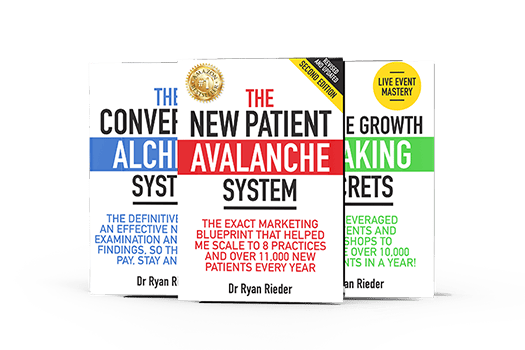In the world of healthcare and business, connecting with people on a personal level remains one of the most effective ways to grow and sustain success. Speaking engagements—whether it’s an orientation class, a lunch-and-learn session, or a community event like “Dinner with the Docs”—are a cornerstone of building trust, credibility, and engagement.
Over the years, I’ve hosted countless talks and events, and one thing is clear: speaking consistently delivers results that few other strategies can match. In this article, we’ll explore why speaking is such a powerful tool for patient engagement and retention, with a special focus on in-practice talks like patient orientation classes.
Why Public Speaking is Essential for Practice Growth
If there’s one thing I’d do differently if I started over, it would be focusing more on speaking. Events like “Dinner with the Docs” and lunch-and-learns have become pillars of my practice’s growth strategy. Speaking engagements not only attract new patients but also nurture long-term relationships.
Why is this so effective? Because speaking allows you to:
- Build trust: Face-to-face interaction creates an immediate sense of connection and authenticity.
- Educate and inspire: You have a captive audience eager to learn from your expertise.
- Position yourself as an expert: Standing in front of a room full of people gives you instant credibility.
Even in the digital age, where online marketing dominates, the power of personal interaction remains unparalleled. This is why even top online marketers still travel the world to speak at live events—because the human connection matters.
Types of Speaking Opportunities
There are three main categories of talks you can incorporate into your practice:
- In-Practice Talks: Orientation classes or health workshops designed for your existing patients.
- Community Outreach: Sessions like lunch-and-learns held at local businesses or community centres.
- Community Events: Larger gatherings such as “Dinner with the Docs,” where attendees can learn about your philosophy and services in a relaxed setting.
While all three types of talks have their merits, let’s focus on in-practice talks, which are often the foundation for patient retention.
The Role of Orientation Classes in Patient Retention
Patient orientation classes are an essential part of creating a successful, thriving practice. These sessions go beyond simply providing information—their primary purpose is to set expectations, build trust, and foster a sense of community.
The Goals of an Orientation Class
- Educate Patients: Help patients understand your philosophy and approach to care. The word “educate” comes from the Latin educere, meaning “to draw out.” Your role isn’t to overwhelm patients with facts but to guide them towards realising their potential for healing.
- Set Expectations: Many patients come with preconceived notions or unrealistic expectations about healthcare. Use these classes to:
- Emphasise that healing takes time and consistency.
- Address common concerns, such as “Do I have to come forever?” or “Does it hurt?”
- Showcase success stories and testimonials to build confidence in your process.
- Create a Community: People are more likely to stay committed when they feel part of something bigger. Orientation classes provide an opportunity for patients to connect with you, your team, and fellow patients.
Overcoming the Fear of Public Speaking
Let’s address the elephant in the room: public speaking can be daunting. For many, the idea of standing in front of an audience ranks among their greatest fears. But here’s the good news: you don’t need to be perfect—you just need to be authentic.
Public speaking establishes you as an authority. When you stand in front of a group and share your knowledge, it reinforces your expertise. And the more you do it, the easier it gets. Consider investing in resources or courses to refine your speaking skills. Trust me, the impact on your practice will be worth it.
How Speaking Drives Patient Retention
One of the most powerful aspects of speaking is how it enhances patient retention. Dr. Siegel’s three factors for successful healing illustrate this perfectly:
- The patient’s belief in their chosen treatment.
- The patient’s belief in their body’s ability to heal.
- The patient’s belief in their provider.
Speaking engagements, especially orientation classes, directly address all three factors. By educating patients, setting clear expectations, and sharing stories of transformation, you’re strengthening their belief in both the process and in you as their provider.
Tips for Delivering an Effective Orientation Class
- Focus on Simplicity: Avoid overwhelming your audience with jargon. Instead, use relatable analogies and real-world examples.
- Incorporate Storytelling: Share patient testimonials or personal experiences to make your message memorable.
- Engage Your Audience: Encourage questions and interaction to keep the session dynamic.
- Have a Clear Call to Action: Whether it’s booking their next appointment or attending a follow-up session, always guide your audience on what to do next.
Take Action: Elevate Your Practice Through Speaking
If you’re serious about growing your practice, speaking should be a core part of your strategy. Whether it’s a health class for current patients or a community event to attract new ones, these engagements are opportunities to connect, educate, and inspire.
Ready to take the next step? Consider joining one of my upcoming workshops in Dallas, Windsor (UK), or Barcelona, where we’ll dive deeper into the art of speaking, including how to fill the room, deliver compelling talks, and ethically inspire patients to take action.
Remember, the power of speaking isn’t just about words—it’s about building relationships, fostering trust, and transforming lives.
Watch the Full Youtube Video BELOW
Love and Light,
Ry



